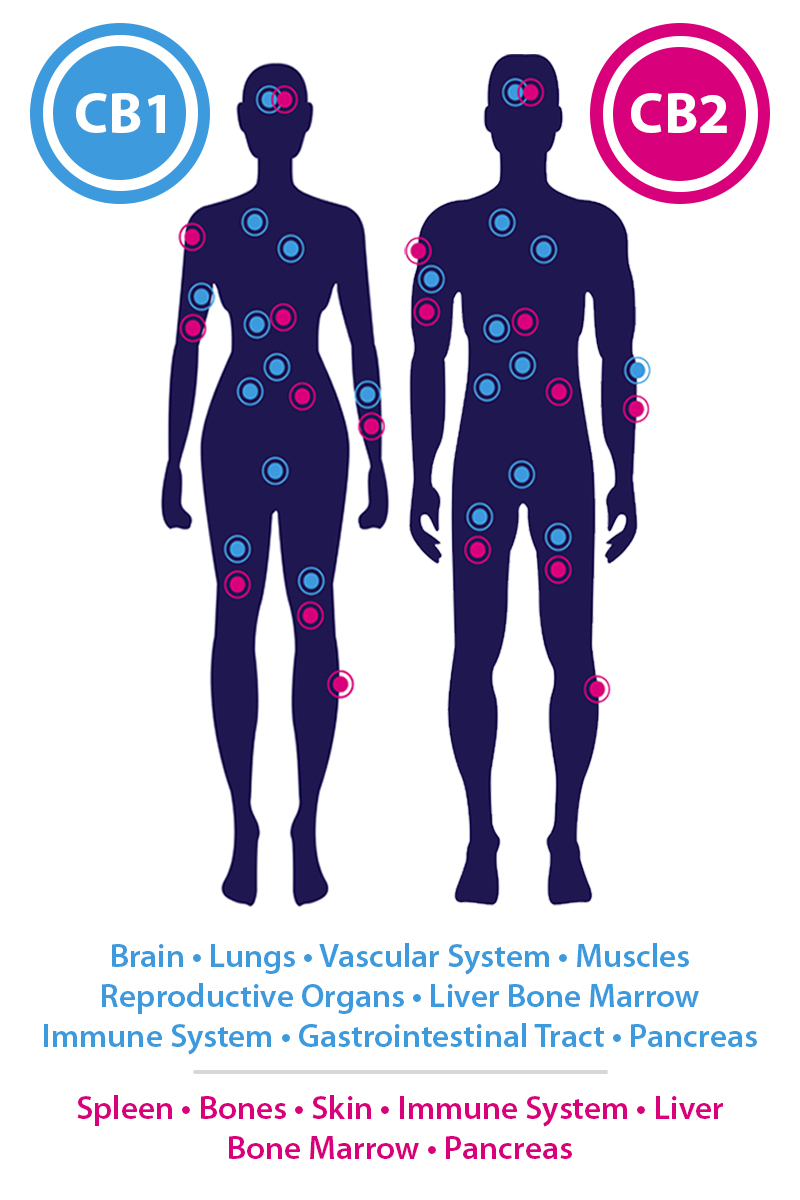What is the Endocannabinoid System?
In one form or another, various components of the cannabis plant have been used for medicinal, industrial, and recreational purposes for centuries. Only recently, however, has research started to shed light on the medicinal potential offered by the plant’s active compounds, known as cannabinoids.
One of the most active compounds within the cannabis plant is the cannabinoid Delta-9-tetrahydrocannabinol (THC). Besides THC, more than 100 different cannabinoids have been identified in the cannabis plant–many with promising medicinal applications. One well known cannabinoid is cannabidiol (CBD).
There are three categories of cannabinoids:
- Phytocannabinoids – occur naturally in the cannabis plant, like THC and CBD
- Endogenous Cannabinoids (endocannabinoids) - naturally produced within the bodies of humans and animals
- Synthetic Cannabinoids – produced in a lab by pharmaceutical companies
Most people are surprised to hear that endocannabinoids occur naturally within our bodies – whether or not we consume medical cannabis. They’re even more surprised to find out we all have an internal communications system known as the endocannabinoid system (ECS) — which helps to regulate sleep, mood, appetite, memory, reproduction, and fertility.
How Our Endocannabinoid System Works
The ECS is made up of three components. First, we have endocannabinoids which occur naturally within our bodies. Second, we have a network of cellular receptors. There are at least two types of cellular receptors.
- CB1 receptors are found in our brains and in the nerves of our spinal cords. CB1 receptors help to control neurotransmitter activity and regulate things like hunger and alertness.
- CB2 receptors occur mostly in our peripheral nervous system, the digestive system, and within cells in our immune system. Endocannabinoids within our bodies bind to these receptors to regulate essential functions like immune function.
Research has shown that CB2 receptors could play a role in the potential treatment of diseases with limited or no approved therapies such as neuropathic pain and neurodegenerative conditions like Alzheimer’s disease.¹ Some researchers believe that we may even have a third type of cannabinoid receptor that remains undiscovered.

Enzymes and the ECS
The third component of the endocannabinoid system are enzymes that help to break down cannabinoids and endocannabinoids. For example, the FAAH enzyme works to break down endocannabinoids created by our bodies, but it can not break down THC. So, when someone ingests cannabis, THC is able to attach to the CB1 receptor in their brain and they experience the sensation of feeling “high.”
Compare this to when someone ingests cannabidiol (CBD). Since CBD does not have psychoactive properties like THC, it can provide health benefits without leaving patients feeling high. For example, CBD can inhibit the FAAH enzyme from breaking down the endocannabinoid called anandamide. Anandamide is produced naturally in our bodies and is known to be a mood enhancer that can provide a calming effect. By preventing FAAH from breaking down anandamide, CBD enables it to attach to the CB1 receptor; which often results in a calming effect for patients. This is why CBD has shown promise in helping to alleviate stress and anxiety.²
This is just one example of why understanding the way cannabinoids interact with our ECS can be essential in unlocking our body’s true healing potential.
Achieving Homeostasis Is About More Than Just Cannabinoids
An often overlooked element in helping to unlock the therapeutic power of our endocannabinoid system is finding the right balance of cannabinoids and terpenes.
Terpenes are aromatic compounds naturally produced in plants. Terpenes are what give plants like jasmine, lemongrass, and cannabis their distinct aroma. In nature, terpenes help to protect plants from animal grazing and infectious germs. They also help to attract pollinators.
The Health Benefits of Terpenes
Terpenes are bioactive, and depending on their concentration and how a person uses them, they can offer potential health benefits. For example, the terpene isopulegol, known for its minty smell, is found in the essential oils of lemongrass, lemon balm, geranium, and eucalyptus. Certain strains of cannabis that are rich in isopulegol, like Kosher Tangie, have shown to have health benefits that include being anti-inflammatory, anti-seizure, antiviral, and gastroprotective.
Click here to read more about terpenes and their potential health benefits.
